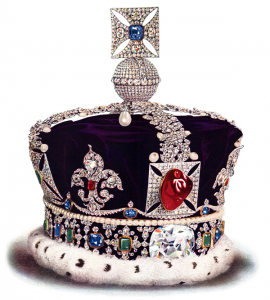Indian trade bodies have recommended continued limits on rough-diamond imports in July, with a fresh weeklong shutdown of the Surat cutting sector adding to concerns about the market.
The Gem & Jewellery Export Promotion Council (GJEPC) and four other organizations have called for the industry to avoid shipping rough into the country between July 10 and 31. They are giving companies a window of July 1 to 9 in which to import goods to keep factories operational, and will review the policy in the final week of the month, the groups said in a letter to members Tuesday.
“Over [the] last few weeks, manufacturing operations have commenced, albeit under several constraints because of issues [such as social distancing],” they noted. “In view of this, it was generally felt that some new raw materials would be needed for continuing operations and keeping the labor force employed.”
Weak polished demand during the coronavirus pandemic led to fears of a diamond oversupply, prompting the GJEPC, the Bharat Diamond Bourse, the Mumbai Diamond Merchants Association, the Surat Diamond Bourse and the Surat Diamond Association to call for a rough-import pause for a month from May 15. They later delayed it to June 1 so companies could complete outstanding shipments.
These initial curbs have helped reduce stockpiles and manage cash flow, while miners have also offered support by being flexible with contract clients’ purchasing obligations, the groups added. The GJEPC will write to the large rough producers, urging them to continue that policy to avoid a collapse in the value of inventory, the letter stated.
However, the industry must still “proceed with great caution,” the organizations warned following a Saturday meeting with trade members.
“It is difficult to say when the Indian diamond industry will be fully operational,” said GJEPC chairman Colin Shah. “The industry [has] resumed manufacturing activities in a limited way, while maintaining all the stringent safety norms. But these are unprecedented times.”
The trade must, therefore, strike a delicate balance between continuing operations and maintaining workers’ livelihoods on the one hand, and ensuring health and safety on the other, Shah added.
Surat closure
The sector suffered a setback on Monday when the Surat Municipal Corporation ordered the closure of all diamond-manufacturing units in the city for seven days, according to a note the Surat Diamond Association released on Tuesday. More than 700 diamond workers in Surat have tested positive for Covid-19 in recent weeks, with the polishing industry becoming a local virus hot spot, the Deccan Herald reported.
Diamond cutting in India has struggled to restart, even after the government relaxed the lockdown rules it introduced in March to contain the coronavirus. The Surat sector gradually reopened in May following a full closure, with the government allowing 50% of workers in factories and 33% in offices. But several outbreaks at manufacturing units have forced companies to shut again and send workers into quarantine.
Local media have carried reports of staff members attending work while unwell, with communal meals and the use of air-conditioning intensifying the risk of infection.
China dispute
Adding to the troubles, a diplomatic rift with Beijing has led to unsold memo goods being held up at Indian customs on their return from Hong Kong and China, traders told Rapaport News. The Indian government has reportedly told customs officials to check all imports from China following a June 15 military clash in a disputed Himalayan border region that killed 20 Indian soldiers and caused an unknown number of Chinese casualties.
Companies might need to route goods via other locations such as Dubai at extra cost to avoid the bottleneck, an executive at a diamond manufacturer explained.
“We have been instructed [by customs agents] not to export anything, specifically diamonds, from Hong Kong to India, as customs have completely refused to release those parcels,” he said. “I see a problem escalating, and if this situation doesn’t get under control in the next two or three weeks, there definitely will be an issue.”
Source: Diamonds.net















